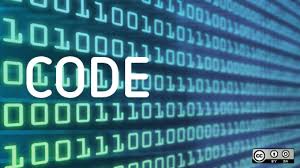
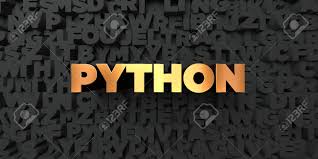
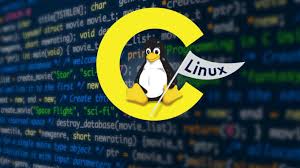

You may use and modify the codes below. As a minimum, analyze them line by line and run them! Knowledge of structures and methods used in these codes is a course requirement of PHYD57. You must have a basic, passive knowledge of (i.e., ability to understand) both C and Fortran. You will actively program your assignments in one of those languages, as you prefer, unless explicitly instructed to use Python.

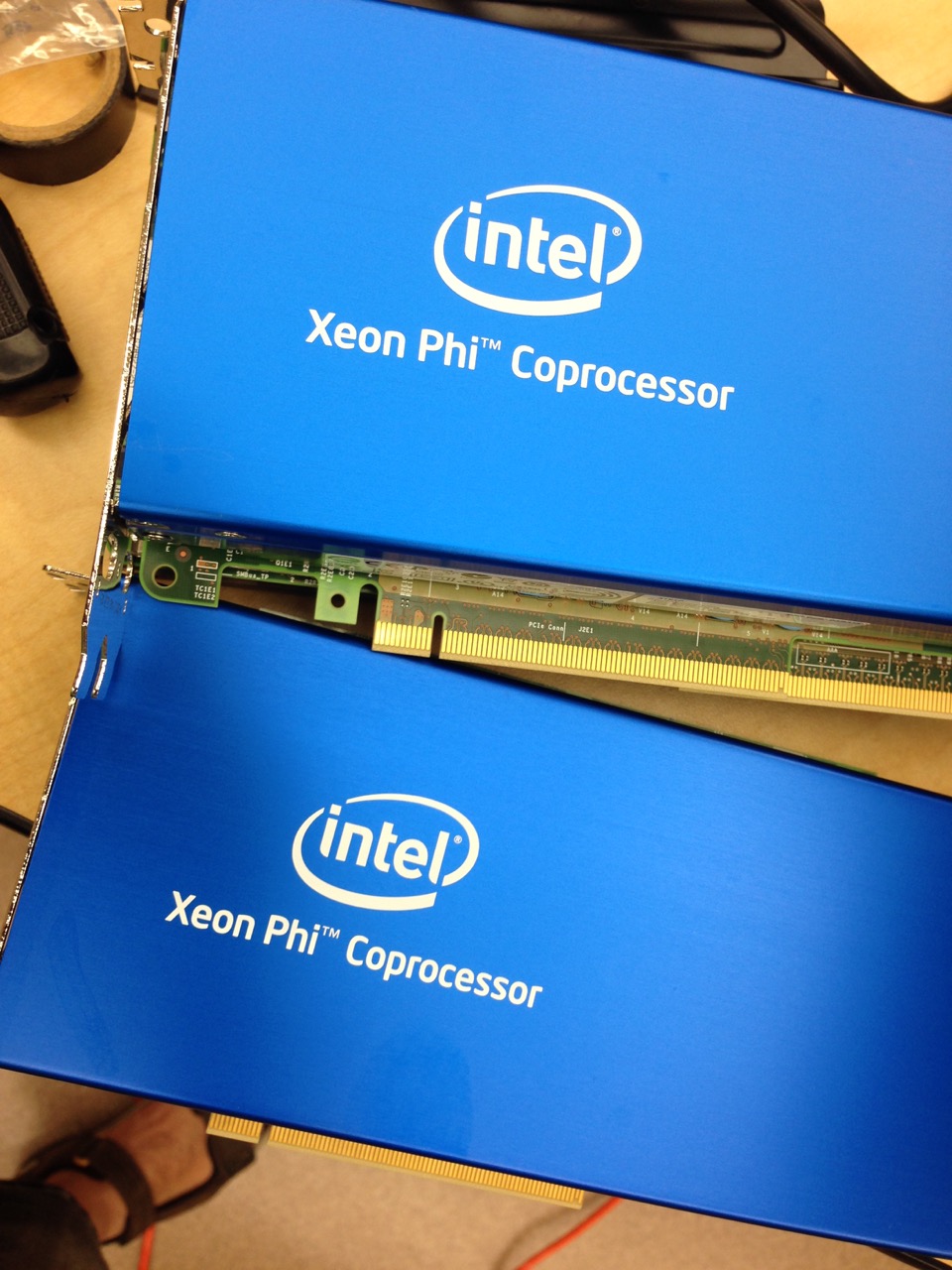

Example of speed gain in NumPy vs. pure Python
http://planets.utsc.utoronto.ca/~pawel/progD57/simple_vectors-03.py
All 3 methods
compared. The 3rd method, allocating and filling 1D array with uniformly spaced
floats from a given one to another given number works OK;
np.linspace(a,b,N) program is much faster than the ones containing
Py loops. Actually several dozen times faster.
http://planets.utsc.utoronto.ca/~pawel/progD57/laplacian-5t.py Image processing program. Uses heat/diffusion Laplace operator stencil to thoroughly smear out an image, then subtract it as background from the original image. The method of unsharp masking enhances the image details, removes some overexposure, and any overall gradient or large scale, smooth pattern.
The important part here is the speed of the code. Timing shows that on average, the image (644 x 680 pixels in size) takes 0.00112 s to process once. The equivalent time for 1M pixel image (1024 x 1024) is about 0.00370 s, that is it's done 270 times per second. This is a highly optimized python code (NumPy arrays and their rolling/shifting is used).
By changing the flag to
mode='loop'
you can see that the 1M pixel processing time by Python loops is t = 0.155 s
(done 6.45 times/s). This is 42 times slower! It is likely that Numpy speed is
near maximum achievable, a good example of the power of vectorization (array
operations).
Below we show some advanced coding in Fortran aimed at speeding up the
Python code (though not dramatic speedup will be obtained - NumPy works
great on the Laplacian blurring problem).
http://planets.utsc.utoronto.ca/~pawel/progD57/cudafor-laplace3-dp.f95
This program is written in F95, as its extension .f95 shows.
It uses several different methods to scan a square array (image 1K x 1K),
and apply smearing passes to the image (q=0.2 means nearly max rate of smearing).
CUDA = execution on Nvidia GPU (gtx 1080ti card). Results show that F95 compiler
which knows how to use GPU (Portland Group Fortran 95 compiler) can
compute one Laplace sweep on 1M pixel images (double precision values)
about 9 times faster than Numpy, at a rate of 2.5-3 billion pixels per second,
or 2.5-3 Gpixel/s.
http://planets.utsc.utoronto.ca/~pawel/progD57/cudafor-laplace3-sp.f95
Single precision CUDA isn't (much or not at all) faster than double
precision, and neither is super fast - maybe the problem we solve is too small,
or inefficiently coded in CUDA, e.g. making the time to start all the kernels
significant.
And here are the programs running on host (CPU), which were compiled with two different fortran compilers. They compare the performance of a variety acceleration techniques.
http://planets.utsc.utoronto.ca/~pawel/progD57/ifor-laplace3-dp.f90
is a version compiled by ifort (Intel compiler), and
http://planets.utsc.utoronto.ca/~pawel/progD57/pgf-laplace3-dp.f95
is a version compiled by pgf95 (PGI or Portland Group Fortran compiler).
The programs are identical. The only difference is comments insode on how to
compile them, and quoted results at the end in ifort version. We can spot some
mild differences between the two compiler, however the much more important
difference is timing of different algorithms contained in separate subroutines.
We will discuss those results in class to show you the fundamental reason for the insufficiency of knowing only Python. We will return to these programs and try to rewrite them in C/C++, as we learn Linux, Fortran and C(++). This order is due to the fact that we will use compilers working under Linux operating system (but you should install a Windows/Mac versions on your laptop if you find one), and that Fortran is easier to learn, so it should be learned before C++.



x,y,z,r = 120 125 150 316 cents, P = 711
Next, if price are in cents (to avoid roundoff error in float calculations)
then, for instance, prices like 3 times 1.00 dollar and one time 7.11,
multiply to give 711*100**3 = 711 millions (int).
There is a way to use prime factor decomposition of the product 711000000 =
79 * 3*3 * (2*5)**6, to restrict search to only such integers that contain
factors of 2, 3, 5, and also for one number only, let's call it x, factor 79.
In fact, only 6 possibilies can be shown possible for x: 79, 79*2, 79*3, 79*4,
79*5 and 79*6. Numbers y, z have a combined 105 possible pair values, number r
follows uniquely from x,y,z. So we only check less than 6*105 possibilities.
With right ordering, we actually only calculate 4k to 5k possibilies, which
takes only about a millisecond in fortran.
http://planets.utsc.utoronto.ca/~pawel/progD57/711.py This is the Python code.
http://planets.utsc.utoronto.ca/~pawel/progD57/711.f95 This is the F90 code.
Finally there is a version of the brute force search through a part of cube of
possibile (x,y,z) triplets [the well ordered triplets], which treats not only
7.11 but all numbers from 3.00 to 20.20, as a possible sum and product of four
numbers with two decimal digits after the point. The code is in fortran95.
http://planets.utsc.utoronto.ca/~pawel/progD57/711s-brute.f95 This is the F90 code.
Random sequences that converge when the length of element is used to create a jump to the next element are called Dynkin-Kruskal sequences, after Eugene Dynkin (1924-2014), a Russian-American mathematician, who mentioned them in his work, and American mathematician Martin David Kruskal (1925-2006). The nature of these Kruskal sequences is that they converge exponentially fast, and for N=52 there is already more than 90% chance that the two randomly started sequences converge at the end of the deck, that is the magician and the spectator independently arrive at the same last key card. I saw the trick demonstrated by 50% of Islandic astrophysicists (1 of 2, he said) at one conference, but didn't know that these convergent, linked list-like, series are so common. Almost any books can be used to show that. Skip a number of words equal to the number of letters in a key word. By the end of the third line you normally converge to the same sequence forever after, no matter which word in the top line you start with. Try it! I think almost any book will be good, with a possible exception of a book in German (very long compound words :-).
https://arxiv.org/pdf/math/0110143.pdf is the math paper that explains why the sequences converge.



We can program a simple loop over a 2-d array in fortran: http://planets.utsc.utoronto.ca/~pawel/progD57/simpler-nb-0.f90. This code does not use any explicit parallelization. Array is declared in the program, not in a separate module, which makes the compiler allocate the array on the stack, not on heap (two different data structures in RAM; google "difference stack heap fortran"). Therefore it is quite possible to get a segfault (segmentation fault) while running the executable, because of limited stack size. To fix that problem, in tcsh shell on art-2 we say something like: % limit stacksize 4000m, while in bash we would use ulimit command (for proper options syntax please see man pages or google it).
The above code is poorly instrumented and we can get only a rough idea of the
speed from running it with time command like so: % time simpler-nb-0.x
(if we have named executable file simpler-nb-0.x). It is better to use
the omp timer omp_get_wtime(), an intrinsic function that returns a double
precision (8B!) result with time in seconds. See code
http://planets.utsc.utoronto.ca/~pawel/progD57/simpler-nb-1.f90.
Data are still on the stack, but the code spits out more information. It interpretes the apparent number of loop passage times estimated FLOP count per passage in two ways: either as FLOPs number or as a result of bandwidth limitation:
$ time simpler-nb-1.x done in 36.7159843444824 ms throughput 32.68332 GFLOPs << theor. limit if bandwidth limited: 130.7333 GB/s 0.101u 0.056s 0:00.16 93.7% 0+0k 0+0io 0pf+0w art-1[397]:~/avx$This example shows that this version of the code is certainly not computationally limited, but likely bandwidth-limited, because computations on CPU could go 1 order of magnitude faster. However, look at these 3 different optimization levels while compiling the code, and the numers pronted by the program:
art-1[397]:~/avx$ ifort -O0 -openmp simpler-nb-1.f90 -o simpler-nb-1.x simpler-nb-1.x done in 1158.52308273315 ms throughput 1.035802 GFLOPs << theor. limit if bandwidth limited: 4.143206 GB/s art-1[401]:~/avx$ ifort -O1 -openmp simpler-nb-1.f90 -o simpler-nb-1.x art-1[402]:~/avx$ time simpler-nb-1.x done in 356.431007385254 ms throughput 3.366711 GFLOPs << theor. limit if bandwidth limited: 13.46684 GB/s 0.401u 0.068s 0:00.47 97.8% 0+0k 0+0io 0pf+0w art-1[403]:~/avx$ ifort -O2 -openmp simpler-nb-1.f90 -o simpler-nb-1.x art-1[404]:~/avx$ time simpler-nb-1.x done in 36.4382266998291 ms throughput 32.93245 GFLOPs << theor. limit if bandwidth limited: 131.7298 GB/s 0.103u 0.052s 0:00.15 100.0% 0+0k 0+0io 0pf+0w art-1[405]:~/avx$ ifort -O3 -openmp simpler-nb-1.f90 -o simpler-nb-1.x art-1[406]:~/avx$ time simpler-nb-1.x done in 36.4911556243896 ms throughput 32.88468 GFLOPs << theor. limit if bandwidth limited: 131.5387 GB/s 0.096u 0.059s 0:00.15 93.3% 0+0k 0+0io 0pf+0w art-1[407]:~/avx$Yes, ~150 GB/s is the absolute limit for the RAM bandwidth, actually I think a fantastic result owing partially to an effective use of its cache by CPU. Level -O0 means no optimization, and that's bad for speed, but the standard level -O2 is good. -O3 doesn't give more speedup.



Here is the calling C program for our library:
http://planets.utsc.utoronto.ca/~pawel/progD57/use_libc.c.
Study how these programs are compiled, try them yourself, modify them to your needs (also all the others below). Compilation flag I used awre mentioned in their headers. In particular, option -lfun links the library libfun.so with the program use_libc.c ["lib" is an implied beginning of the .so library].
Now let's compile a library (first, a simplified version w/o
OpanMP part and big array) for use with Python:
http://planets.utsc.utoronto.ca/~pawel/progD57/fun_lib0.c
Here is the calling Python program for library fun_lib0.so:
http://planets.utsc.utoronto.ca/~pawel/progD57/callingC-0-py2.py.
It is, as the name indicates, a Python2 version, since only that version is
fully installed on art-2, where I want you to try compiling and running
programs yourself in user phyd57's sub-directory progD57.
As you see, there are certain tricks that need to be known or googled up, about calling C or other libraries from Python, since it's not trivial. But you do have this template now, so explore and modify it to your needs.
Finally, let's call the full version of the library with OMP.
http://planets.utsc.utoronto.ca/~pawel/progD57/fun_lib.c
Here is the calling Python program for fun_lib.so:
http://planets.utsc.utoronto.ca/~pawel/progD57/callingC-from-py2.py.
We see that the estimates of speed are virtually the same for C calling C library, and Python calling the same library. That's good, it means that the C/Python inteface does not steal any performance, in this example.
Please go back to the links (Lectures 2 and 3) to programs efficiently implementing the cross-shaped stencil of Laplace operator - now you are going to be able to understand the details, such as OpenMP parallelization!
First, a simple CPU version http://planets.utsc.utoronto.ca/~pawel/progD57/tetraDc.f90
And this is the CPU version with changes, can be compiled either with GNU,
Intel or PGI fortran compilers (I believe Intel produces fastest code):
http://planets.utsc.utoronto.ca/~pawel/progD57/tetraDc-3.f90
Midterm problem 1 implemented in Fortran, in program volcano-disl.f90 .
See the program below, compile, run.
http://planets.utsc.utoronto.ca/~pawel/progD57/volcano-disl.f90
The crucial computations are done like this (click the nicely colored view):
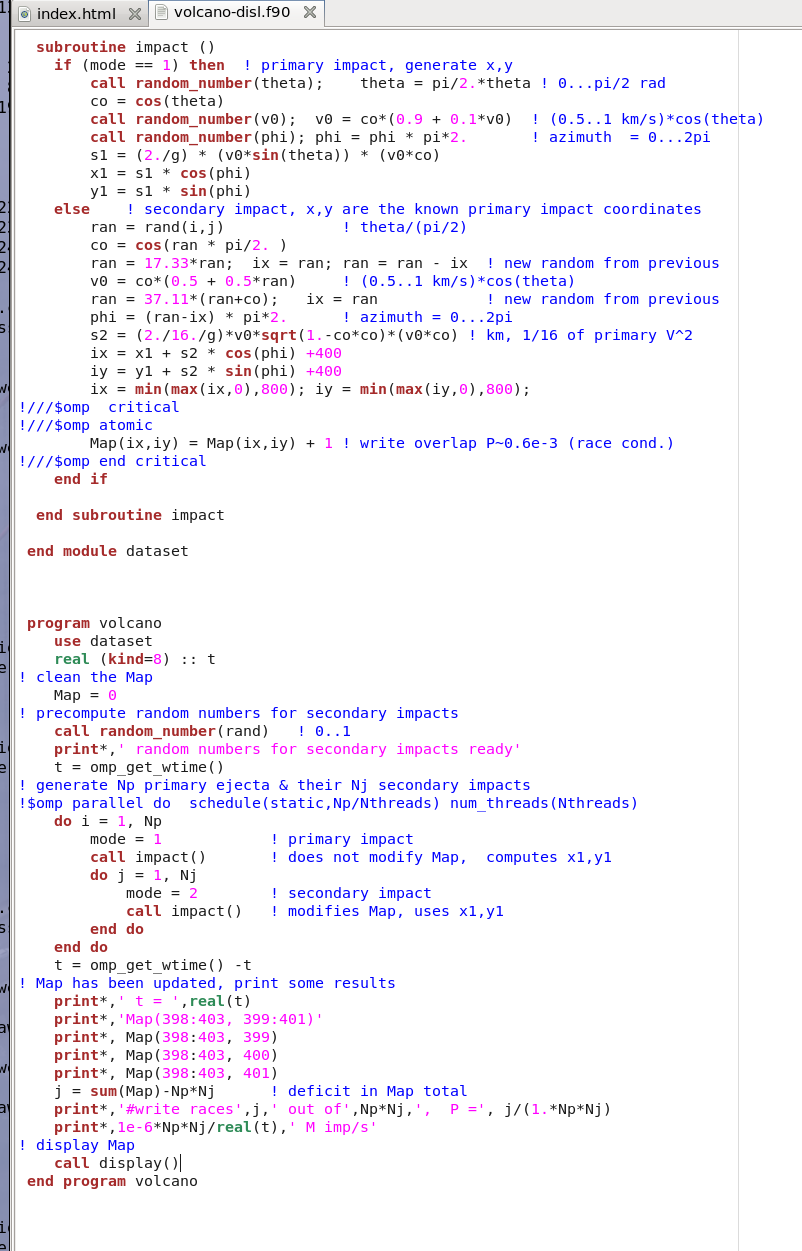
There is opportunity for you to explore several issues by playing with the program
and running it in art-2's phyd57 account, dislin subdirectory, where it resides:
• How does the compiler (Intel ifort vs. PGI pgf90) affect performance.
PGI produces much slower code, processing ~50 instead ~140 mega-ejecta per sec.
• OpenMP scheduling options, play with it - no big differences.
• Change Nthreads from 1 to 24, see that 12 is optimum
• Insert $omp atomic, $omp critical, around the Map(ix,iy)=Map(ix,iy)+1
update, watch speed drop a few times to 30 times, correspondingly.
That's the price to pay for no contentions while updating Map pixels.
See the statistics printed by the program. We discussed thios in tutorial 6,
and it turned out to be true: probability of simultaneous writing to a
pixel location (race condition resulting in one or both updates being dropped)
is only P < 0.001.
• different ranges of V
v0 = co*(0.5 + 0.5*v0) -> v0 = co*(0.95 + 0.1*v0) (see the ring?)
• Notice that I generate one random number per impact only. Pseudorandom
float contains quite a few random digits, therefore one can generate three (like
here) or even more slightly more coarse-grained pseudorandom floats from it.
Even though I didn't see much speedup from this trick, it saves substantial amount
of memory.
• Read and learn the usage of DISLIN from the the preceding, as well as
these two codes (compilation instructions inside):
ex11_1.c
and
ex11_1.f90



CUDA C blog by Mark Harris, NVIDIA <== recomended
CUDA C Programming Guide. Detailed. Definitive (By Nvidia!). Read first 30 pages.
CUFFT library description - useful when you need FFT. Some learning curve, but once you get it to work, the world of DSP is yours. Has examples of all fft's (complex to complex, real to complex etc.).
Paper comparing CUDA in Fortran and C with CPU performance, as a function of job size.
Dr. Dobbs blog CUDA, Supercomputing for the Masses. Links to all 12 pieces. A bit old but informative.
Cuda programming model - Refresher.
SAXPY
In the phyd57/progD57 account on art-2 you can find these three simple tests
of the basic saxpy (meanig: single-precision float a*x+y) i.e. the
basic linear algebra operation.
http://planets.utsc.utoronto.ca/~pawel/progD57/simple_saxpy_cuda-.cu
(sometimes we give extension .cu to CUDA codes written for nvcc compilation,
but here it's a version for CPU, never mind!)
http://planets.utsc.utoronto.ca/~pawel/progD57/simple_saxpy_cuda.cu. This
one does the honest CUDA kernels.
http://planets.utsc.utoronto.ca/~pawel/progD57/cuda-perf.f95. F95 version
with more diagnostics, showing bandwidth, compute performance, and a way to
call shell commands from within the program.
Tetrahedra on graphics card
This is a GPU version of the code you may have seen before if you were interested in tetrahedra; written in part using CUDA Fortran; to be compiled with the PGI compiler pgf95. https://planets.utsc.utoronto.ca/~pawel/progD57/tetraDg-3.f95.
tau-dis-cpu.f90 was used to solve problem 3.1. You can see from the starting picture below that in 2019 it had a different inital density function than in 2025. Check the solutions to A3 in 2025 for the current version.

The computer can do something similar. First, it can very realistically simulate a physical pendulum with a movable pivot point. Let's give the computer the benefit of solving the problem in 2-D instead of full 3-D world. (We can always go back and complicate the task later, if we wish.) The problem is then effectively 1-D, because the length of a rigid broomstick does not change, and the angle $\phi(t)$ is the only unknown (If the pivot moves, its horizontal position will be the second variable. More about it later. And BTW, I'll be counting angle $\phi$ starting from zero in the stable, broom-down position that most brooms practice every day). So if the pivot of the pendulum does not move, we have the following ODE $$ \ddot{\phi} = -\frac{g}{L} \, \sin \phi - \gamma \dot{\phi}$$ You know Physics, so I don't have to explain much. I'll just say that we can assume the length $L=1$ m, and $\gamma=0.01$ s$^{-1}$ being a small friction coefficient representing the small effect of friction at the pivot (axle). Air drag would require a quadratic formula, but this is a sufficient approximation. Our pendulum is very much underdamped, and on timescales of interest in this problem, friction does not damp the motion visibly. But why not have it, so in case our AI decides not to do a thing, the amplitude of broom's swings will slowly decrease in time, as it realistically should.
We always start from fairly arbitrary but fixed initial conditions, where the pendulum is not fully inverted. We simulate the first 20 seconds of motion.
If the pivot of the broomstick is moving horizontally on a platform, and the platform is much heavier than the broom, or it is moved by a powerful motor that does not care at all about the broom swinging this or that way, then the Euler-Lagrange equatio helps us formulate a generalized ODE: $$ \ddot{\phi} = -\frac{g}{L} \, \sin \phi - \gamma \dot{\phi} + \frac{1}{L}\, \ddot{x}\,\cos \phi$$ where $x(t)$ is the position of the platform, which will be controlled by an artificial brain.
The artifical brain (NN = neural network) is attached to sensors & can instantaneously read the position, speed and acceleration of both the platform and the broomstick angle $\phi$. Based on this knowledge, it constantly gives commands for the actuators to change the platform's x-acceleration $\ddot{x}$ to a new value (acceleration is produced by a motor commanded by the NN). We will be simulating the system with a constant timestep $dt = 0.002$ s, and in every step we will first ask the NN to adjust the $\ddot{x}$, then evaluate the right hand side of the ODE, then adjust the linear speed $\dot{x}$ of the platform, and the angular speed of the broom $\dot{\phi}$, then finally update $x$ and the angular position $\phi$. It's a de-facto 2nd order accurate scheme like the leapfrog method.
For the machine to be able to control the platform successfully, we can assume
that we need to use several inputs, and at least several neurons in a small
network like so

In fact, we want: (i) at first try to limit the inputs to four ($\phi,
\dot{\phi}, x, \dot{x}$), and (ii) have the simplest brain possible
(fewest weights to adjust). So we will try to have only 4 neurons: 3 hidden
neurons and one output neuron, and only $N = 14$ connection weights $W_i$ or
free parameters inside NN to adjust, plus one more in the sigmoid function
$$ S(z) = \frac{z}{z + W_{N+1}}. $$
That last parameter (a.k.a. hyper-parameter) controls the value $z$ at which
the sigmoid starts to behave nonlinearly & significantly levels off (for
$z\gg W_{N+1}$, $S \to 1$.)
But our network will differ from a one-hidden-layer net in the figure, in that
it will be a thin 4-layer net, with one neuron in each layer. The net works very
simply like this: neurons multiply their inputs by weights $W_i$ and sum them
in a variable we may call $z$, then apply the sigmoid function $S$ to $z$,
nonlinearly limiting $S(z)$ to a value less than 1. Final layer is also followed
by the sigmoid.
Admittedly, it's a rather minimalistic design, but let's see how far (or near?)
will it take us.
We adopt certain error function signifying that the broom hasn't been stable in the inverted position for long, during the 20 second long simulation (that's a fixed time we adopt which is definitely a hyperparameter but we don't vary it). The task of teaching the network useful behavior is optimization of the error function in 15-dimensional space. We assume that there are very many local minima (you may verify that guess yourself - see last paragraph), therefore it is more important to sample the parameter space thoroughly than to have a sophisticated method to follow the path to every local (probably pretty useless) minimum. So we simply generate from Npar=10000 up to Npar=200000 parameter sets randomly (each from -0.5 to +0.5), and find the deepest minimum in that set.
Example of an unsuccessful artificial brain
Despite not having the coding issues outlined below, this program
inv-pend-ctrl-4a.f95, is coming close
but not finding a solution.

Some nets that solve the problem
This is inv-pend-ctrl-3orig+plt.f95
, a sequential (meaning not multithreaded, run in CPU) Fortran code
that solves the broomstick problem. It had a hidden bug, namely the structure
of the net wasn't what it was intended to be. Index range of nn() was exceeded.
Take a look! Yet this program found a satisfactory solution with 30000 trials. (
Q: Why is the number necessarily larger than O(2**15) = 32K ?? There is a
reason..)

This is
inv-pend-ctrl-4b.f95 ,
solves the broomstick problem. The architecture of the NN and the error
function have been improved. But it still
had a bug in the sigmoid, which ... made it succeed!. Take a look.

The bug is the omission of the intended abs(x) in the denominator, needed for the sigmoid to be odd in $z$.
Finally these are broom-ctrl-5.f95 , and broom-ctrl-6.f95 , which have the sigmoid somewhat fixed. Fixing it in a standard way to be $$S(x) = x/(W+|x|)$$ does not give a working solution within the number of trial sets we are practicing!! So we fix it to be the (bad old) $S(x) = x/(W+x)$, plus an additionally enforced condition $$ -10 < S(x) < +10.$$ This again allows the code to solve the broomstick problem. We have varied one more hyperparameter to see what it will do. It's the cinstant that multiplies the output of the NN when we substitute it for the value of x-acceleration. Since we now enforce $|S|<10$, if the multiplier is X, then the acceleration is limited in absolute value sense to 10X (m/s), and therefore to about X Earth's gravity g's. Depending on X={2.5, 8} we get different solutions within 180000 samples of parameter space.
In summary, I have made several errors in coding the "artificial intelligence". And it worked with the bugs better or the same as without them. Draw conclusions.
At last, something for you to do
At the end of the code, add a part exploring the error function surface in some small vicinity of the found optimum set of parameters. Surprise and an important lesson guaranteed.
Then, using the optimum parameters found for $\phi_0=160^\circ$, ask the NN to balance a broom starting from changed initial condition: $\phi_0=159^\circ$, $158^\circ$, ..., 150$^\circ$. Is the network's ability general or specific to the given initial conditions (requiring re-training for every starting setup)? How wide is the range in which the trained network is useful?
Finally, would it be possible to move the pendulum's pivot in (x,y) plane? Would that speed up the solution or make it more difficult? Why?
In the lectures I showed the GPU version (in CUDA Fortran), which is far superior to CPU implementation. Let's finish the story with the comparison of different variants of the code (different stencils, different arithmetic precision) on different GPUs we have in the cluster.
This is a GPU version of the 5-pt stencil Laplacian code you have seen before;
written in part using CUDA Fortran; to be compiled with the PGI compiler pgf95.
This version is dp (double precision floats, 8B), there is also an sp version
(single precision float, 4B) with a similar name on art-1,2.
https://planets.utsc.utoronto.ca/~pawel/progD57/cudafor-laplace3-dp.f95.
Try runnig the following code: cudafor-laplace3-new.f95, after setting the pr constant to either 4 or 8 for single vs. double precision.
We can compile and run on art-1 and phi-9 and see the results... have fun. There are some surprises in the results. Not just regarding the sheer performance, which on RTX 30390 Nvidia card in single precision is very good:
pawel@art-8 progD57]% cudafor-laplace3-new.nx single precision, device 0 t= 1.2168884E-05 82176 fps, val= 0.3449661 CUDA kernel 2 t= 1.8210410E-05 54913 fps, val= 0.3449661 CUDA kernel 0 t= 8.7828637E-05 11385 fps, val= 0.3449661 CUDA kernel 1 t= 1.2850309E-03 778 fps, val= 0.3449661 CUDA $cuf t= 2.6085138E-04 3833 fps, val= 0.3449663 Host OMP slices t= 3.2187940E-04 3106 fps, val= 0.3449663 host OMP t= 7.0042134E-04 1427 fps, val= 0.3449663 host t= 3.7199999E-03 268 fps, Numpy dp t= 0.1562400 6.4 fps, Python single precision, device 1 dev not set! Warning: ieee_underflow is signaling Warning: ieee_inexact is signaling FORTRAN STOP [pawel@art-8 progD57]%



Partial summation of infinite series (explicit up to $n$ terms) has the form: $$\exp(x) = e^x = 1 + \frac{x}{1!} + \frac{x^2}{2!} + \frac{x^3}{3!} + ... = \sum_{k=0}^\infty\, \frac{x^k}{k!} = \sum_{k=0}^n\, \frac{x^k}{k!} +O(x^{n+1})\,. $$ Factorial function $k!$ is defined as $k! = 1\cdot 2 \cdot 3... \cdot k$. As you see in the codee, we do not perform the factorial evaluation for every $k$ separately. Rather, since $k! = k (k-1)!$, for efficiency we re-use the already found $(k-1)!$, we simply update it to become $k!$. See the code.
We call the gradually improving partial sum of the series of functions $y$.
We plot $y$ vs. $x$ for every $k$. We stop at $k \approx 20$,
http://planets.utsc.utoronto.ca/~pawel/progD57/plot_exp_approx-1.py
Exp function series approximation.
The figure constructed with MatPlotlib shows that the larger the absolute value of
the argument $x$, the more terms are needed for a good approximation of
the function $e^x$, for both positive and negative $x$.
Remark: use the zoom button on the plotting widget that your Python installation
provides. This way you can disentangle particularly dense parts of the figure!
Another example of the same type of simple overplotted lines with automatic coloring by PyPlot. http://planets.utsc.utoronto.ca/~pawel/progD57/plot_cos_approx-1.py does the same as above with the trigonometric function cos(x). Taylor (MacLaurin) series of it is given by $$ \cos x = 1-\frac{x^2}{2!} +\frac{x^4}{4!}- ... =\sum_{k=0}^\infty \,(-1)^k \, \frac{x^{2k}}{(2k)!}. $$ BTW, should you ever forget how the sine and cosine series arise, remember only the exp-series above (simple!), then plug $ix$ for the argument where $i$ is the imaginary unit. Euler's formula $e^{ix} = \cos x + i \,\sin x$ will tell you what is the expansion of sine and cosine. Every second term of the $e^{ix}$ expansion will be real (that's the above series for $\cos x$). The rest will be purely imaginary, namely $i$ times $$ \sin x = x -\frac{x^3}{3!} +\frac{x^5}{5!}- ... =\sum_{k=0}^\infty \,(-1)^k \, \frac{x^{2k+1}}{(2k+1)!}. $$ Using the series, you can show that $\cos x = \frac{e^{ix} + e^{-ix}}{2}$ (an obviously even or symmetric function), while $\sin x = \frac{e^{ix} - e^{-ix}}{2i}$ (an obviously odd, or antisymmetric function of $x$). Change $x$ to $-x$ in these expressions if you are not convinced. And one more thing, hyperbolic sines and cosines are, correspondingly, odd and even real functions of their arguments: $ \cosh x = \cos ix = \frac{e^{x} + e^{-x}}{2}$, while $\sinh x = -i \, \sin (ix) = \frac{e^{x} - e^{-x}}{2}$.
http://planets.utsc.utoronto.ca/~pawel/progD57/simple_IO.py shows how to read and write to/from ASCII files, comma or space-separated values.
http://planets.utsc.utoronto.ca/~pawel/progD57/simple_stat.py shows how to compute (in 3 different ways) simple statistics, like the average values and two kinds of sigmas (st. dev. of the data, std dev of the mean), for data read from files.
http://planets.utsc.utoronto.ca/~pawel/progD57/kepl-GJ-3512b.py
Planetary system
around a small M5 dwarf star not far from Earth (10 pc) was discovered and
announced in late 2019. Media say it's a big discovery challenging
the existing planet formation theories. Not necessarily.
Planets is on eccentric orbit, and the program produces not only the visualization of planet's uneven, eccentric motion but also the correction to mean flux received on the planet because of e=0.4356. It even computes the temperature of the planet.
http://planets.utsc.utoronto.ca/~pawel/progD57/expfract-s1.py Exponential (Artymowicz) fractal calculator
http://planets.utsc.utoronto.ca/~pawel/progD57/histo3.py Generate a bunch of random numbers and show their histogram. Compares uniform and normal distributions.
http://planets.utsc.utoronto.ca/~pawel/progD57/simple_mtc_pi.py Calculation of Pi by Monte Carlo. A classic of MtCarlo demonstrations. Simple script.
http://planets.utsc.utoronto.ca/~pawel/progD57/simple_mtc+int_pi.py Calculation of Pi by Monte Carlo. This version compares the Monte Carlo accuracy with a regular integration on a uniform mesh of N points, the same number as MtC particles (so, similar computational effort). We begin to see the problem with MtC: $1/\sqrt{N}$ signifies the slow convergence to zero value of error.
http://planets.utsc.utoronto.ca/~pawel/progD57/simple_mtc_pi-4results.py Summarizes the results for different N in one plot. This script does not compute anything, just plots the results. Run and see the plots.
http://planets.utsc.utoronto.ca/~pawel/progD57/Radioactive.py Calculation of decay histories of radioactive isotope U-235 by Monte Carlo simulations. Compares different realizations of the experiment in one plot.
http://planets.utsc.utoronto.ca/~pawel/progD57/dusty-box-1.py
Dusty box, or rather a dusty duct, is simulated to see how we can solve a basic
radiation transfer problem by randomly placing absorbers in the field of view.
It turns out, we can reproduce very exactly the analytical result
$I = I_0\; e^{-\tau}$.
On the left is a layer of clouds with $\tau \gg 1$, which we analysed in Lecture 5.
Bay of San Fancisco, 21 July 2019. And to the right, I photographed
the optically thinner cloud
($\tau \sim 3.6?$) not of water droplets but smoke and ash particles from
forest/grass fires near Meteor Crater, AZ, 19 July 2019.
http://planets.utsc.utoronto.ca/~pawel/progD57/rnd-walk-gamble-0.py Multiple 1D (i.e., 1-dimensional) random walks on one plot. This simulates diffusion in physics, paths of photons in the sun, or some extremely large Galton board, flight of an arrow through a turbulent air, how perfume spreads in still air, how heat speards through solids, and/or a number of other things. No restrictions on the range of random walk, in this version.
http://planets.utsc.utoronto.ca/~pawel/progD57/rnd-walk-gambles.py provides a modified version of 1D RND Walk, with absorbing boundary at X=0 (a.k.a. Gambler's Ruin Problem).
http://planets.utsc.utoronto.ca/~pawel/progD57/err_d1f-3.py Thorough error analysis, both roundoff and truncation error, analytical and numerical, of two stencils for first order derivative. Demonstrates the advantages of high order stencils.
http://planets.utsc.utoronto.ca/~pawel/progD57/simple_bisec.py Bisection method of root search of a 1-D real function. Illustrates the generally robust performance and the possibility of missing some zeros.
http://planets.utsc.utoronto.ca/~pawel/progD57/simple_secant.py Secant method of zero finding of a 1-D real function. There was a bug in the program, now converges as fast as it should, and in fact impressively fast, 'superlinearly', almost like Newton's scheme, in less than 8 steps as a rule.
http://planets.utsc.utoronto.ca/~pawel/progD57/simple_newton.py Newton's method of zero finding of a 1-D real function. Illustrates the relatively fast convergence in the case of 3rd order polynomial function. When it works, it works really great. When it fails, it fails like no other algorithm. Can you say when?
http://planets.utsc.utoronto.ca/~pawel/progD57/compare_sqrt-2.py Comparison of all three methods of finding zero efficiently, one of them (Newton's) is run in two variants: with numerical and analytical derivative calculation. One can see the huge advantage of those methods which converge quadratically or at least faster than linearly, meaning that the next error is asymtotically proportional the a power of the previous error larger than 1., sometimes 2.
http://planets.utsc.utoronto.ca/~pawel/progD57/integ-p124-arc.py compares the convergence of several simple 1st to 4th order integration schemes of the function $1/(1+x^2)$ between $x=0$ and $x=1$. Name derives from Arctan(x) which is an analytical integral value. BTW, all of the integration codes have known exact answers, mostly involving number $\pi$. These codes therefore calculate that number numerically.
http://planets.utsc.utoronto.ca/~pawel/progD57/integ-p124-exp.py compares the convergence of several simple 1st to 4th order integration schemes of the function $\exp(-x)$ between $x=0$ and $x=1$.
http://planets.utsc.utoronto.ca/~pawel/progD57/integ-p124-cur.py compares the convergence of several simple 1st to 4th order integration schemes on the problem of the length of the curtain as a line integral using Pythagoras theorem, or an integral of $\sqrt{1+y'^2}$ where $y(x)$ is the curtain's shape and $y'=dy/dx$. This turns out an easy problem for numerical integration schemes!
http://planets.utsc.utoronto.ca/~pawel/progD57/integ-p124-Acirc.py compares the convergence of several simple 1st to 4th order integration schemes of the function $\sqrt{1-x^2}$ (1/4 of a circle between $x=0$ and $x=1$). This function poses a lot of problems for numerical integration schemes, because of its unbound derivatives as $x\to 1$.
http://planets.utsc.utoronto.ca/~pawel/progD57/integ-p124-Lcirc.py compares the convergence of several simple 1st to 4th order integration schemes of the length of curve $\sqrt{1-x^2}$ (1/4 of a circle between $x=0$ and $x=1$). This integration also poses a lot of problems for most numerical integration schemes, because of its unbound derivatives as $x\to 1$.
http://planets.utsc.utoronto.ca/~pawel/progD57/fit-4parN.py solves the linear least-squares fit problem. The function has 4 parameters (amplitudes) multiplying a parabola plus a cosine function of known period. Data includes noise. Program successfully restores the hidden truth (line), effectively denoising the data.
http://planets.utsc.utoronto.ca/~pawel/progD57/fit-4par-N2.py solves the linear least-squares fit problem. The function has 4 parameters (amplitudes) multiplying a parabola plus a cosine function of known period. Data has a large amount of noise added, making it visually difficult to separate smooth functional dependence from quasi-Gaussian noise. Despite this, program fairly successfully restores the smooth underlying function/denoises the data, although the quality of parameter restoration starts to suffer (esp. curvature a[0] is too low).
http://planets.utsc.utoronto.ca/~pawel/progD57/diff1-ex3.py
1-DoE integration; solve $$\frac{dy}{dx} = f(x,y) = -y \;\sin x,$$
with boundary condition $ y(0)=1$, using various integration schemes.
http://planets.utsc.utoronto.ca/~pawel/progD57/diff1-ex3L.py
Same as above but
over a 10 times longer period of time. Despite an initially high precision of
some methods, a drift in solution becomes evident. This is bad news, as it is
enough to just wait until the drift destroys the initial accuracy.
http://planets.utsc.utoronto.ca/~pawel/progD57/phys-pendulum.py
Motion of a physical pendulum (able to go to the top and over the top on a
rigid massles arm, depending on initial conditions.
The script implements a Leapfrog algorithm, which in this implemetation looks
pretty much like Euler method. Not only does it not do the half-step with
positions, full step velocities, and then again half-step positions,
but also does not start in a special way to desynchronize speeds and positions
in time by $dt/2$... Yet it is accurate! (2nd order accurate).
This is the diffraction-interference pattern from two slits on a screen 1 m away.
Slits are 30 microns wide, spaces 240 microns apart.
http://planets.utsc.utoronto.ca/~pawel/progD57/inteference-1.py
Compare the pattern with the pattern of diffraction on one slit! And click on
the middle illustration above. You'll see the red laser interference fringes
in the actual experiment on the right hand side.
http://planets.utsc.utoronto.ca/~pawel/progD57/pond1.py
This code is deliberately a little buggy and slow. But that's how one would
very naively approach the solution of the 2-D
linear wave equation: $ u_{tt} = c^2 (u_{xx} + u_{yy})$
using Python loops (hence slowness!)
http://planets.utsc.utoronto.ca/~pawel/progD57/pond3.py
shows a wave pattern from an initial disturbance of a pond near the corner.
Algorithm uses only Z arrays (different copies for new, current, and
previous time step of array Z.
http://planets.utsc.utoronto.ca/~pawel/progD57/pond4.py
shows a wave pattern from a localized initial disturbance far from the boundary.
This algorithm is only slightly different, introduces explicitly
V array which is first time derivative of array Z (times dt).
Run at about the same speed(?) as pond3.py.
http://planets.utsc.utoronto.ca/~pawel/progD57/pond4-1obj.py
shows that one can force not only boundary conditions on the walls, but also
in the middle, creating a region impermeable for waves.
http://planets.utsc.utoronto.ca/~pawel/progD57/pond4-2slits4.py
http://planets.utsc.utoronto.ca/~pawel/progD57/pond4-2slits5.py
This is the famous double slit experiment simulated on water surface or as
soundwaves (no quantum mechanics here, though QM experiment is strictly
analogous and creates diffraction-interference patterns for the same reason.
You can tilt the view by usung the cursor to notice the interference better.